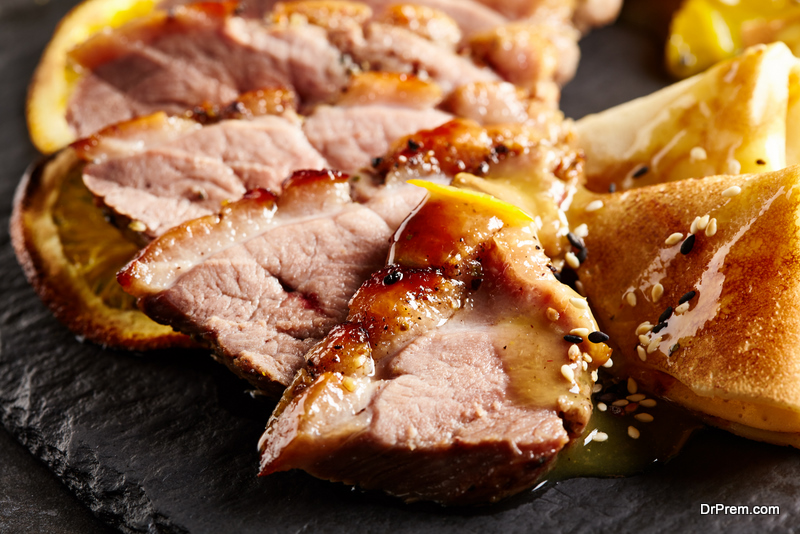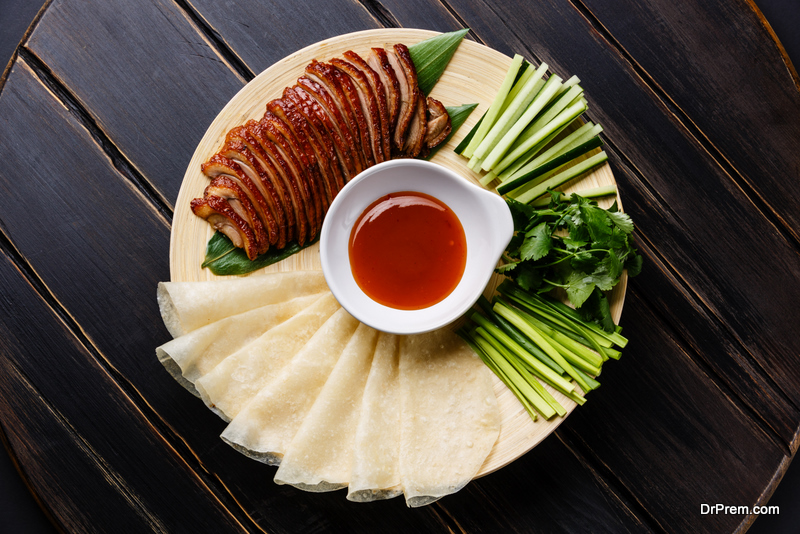Peking duck has long been a favorite meal in China and has become increasingly popular in western nations as well. Although the preparation process for Peking duck can be time-consuming and intricate, the Chinese have used the same methods since the country’s Imperial era. Each part of the process from sourcing the duck to marinating, roasting, and serving it must proceed according to plan.
People can tell the difference when chefs have taken shortcuts and attempted to prepare Peking duck commercially. The duck will not have the appropriate fat to meat ratio, leaving diners or guests feeling dissatisfied with a dried-out meal.
Step-by-Step Process for Preparing a Meal of Peking Duck
 The first thing chefs must do is work with a meat supplier to obtain the perfect White Beijing duck and pluck it. The next steps are as follows:
The first thing chefs must do is work with a meat supplier to obtain the perfect White Beijing duck and pluck it. The next steps are as follows:
- Pump air between the flesh and skin of the duck.
- Make an incision in the duck to remove its inner body parts.
- Clean the duck and place it on a skewer with a wooden rod attached.
- Suspend the duck above a flame for several hours.
- Soak the duck in boiling water to tighten the skin, fill it with water, and then sew it shut.
- After the duck has gone through the hanging and drying process, the chef uses a marinating brush to coat it with sugar and other ingredients to add flavor.
- The chef suspends the duck in a large oven with the temperature set to 500 degrees for approximately 40 minutes.
Chefs can determine that the Peking duck is ready to serve when its skin has a crisp texture, and it has a brownish red color. The chef or dinner host then brings the Peking duck to the table and cuts it into dozens of thin pieces for guests to enjoy.
The most common way to cut a duck before serving is to start at the neck and work all the way around the bird while keeping the knife at a 90-degree angle.
Serving a Meal of Peking Duck
A traditional meal of Peking duck involves more than just eating the meat slices. Chefs or dinner hosts also present guests with thin pancakes. Guests place the duck meat and toppings into the pancake and then roll it up to make it easier to eat.
Typical toppings with Peking duck include cucumbers, hoisin sauce, and scallions. At the more formal Chinese restaurants, the chef will place the ingredients inside the pancake for the guests and serve it to them that way.
Some chefs also choose to serve steamed buns with the meal. Those who do not offer steamed buns prefer for guests to focus more on the thin pancake and the ingredients inside of it while enjoying their meal.
What to Do with the Leftover Meat and Duck Carcass
 Restaurants may keep the duck carcass or offer guests the opportunity to take it home and use the duck stop to make several pots of soup. The leftover meat also blends in well with any type of soup. A single White Beijing duck can create several meals beyond the initial presentation at a restaurant or dinner party.
Restaurants may keep the duck carcass or offer guests the opportunity to take it home and use the duck stop to make several pots of soup. The leftover meat also blends in well with any type of soup. A single White Beijing duck can create several meals beyond the initial presentation at a restaurant or dinner party.
Article Submitted By Community Writer




